Submitted by Deanna Stoppler, Team Easyboot 2015 Member
“Team guts will always beat individual greatness.” −Bob Zuppke
My first Tevis Cup experience has me thinking about teamwork and camaraderie. Horses, riders, crews, volunteers, veterinarians, and farriers—all working together toward the common goal of completing a grueling course through the Sierra Nevada Wilderness, 100 miles in one day.

As a member of the Easyboot Elite Team—a group of farriers selected by EasyCare, Inc to glue shoes on Tevis competitors’ horses—my objective was to work hard, perform quality hoof care, support my team members and the horses that we worked on, and to absorb as much of my first Tevis experience as possible.
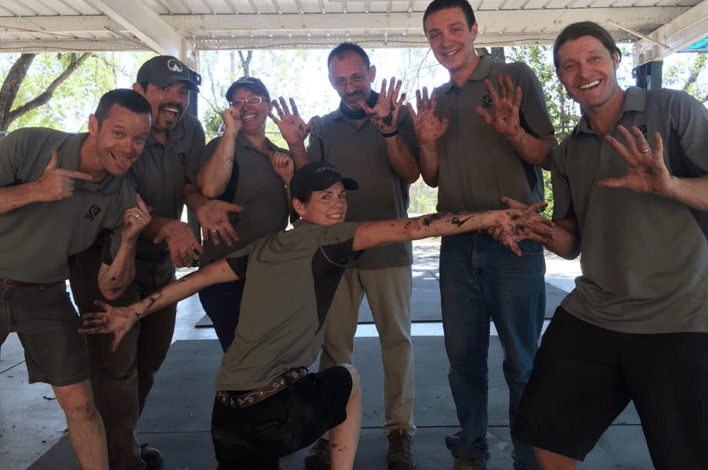
We got a bit dirty on Day One.
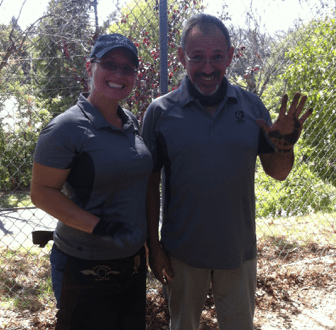
Day one consisted of team training and days two and three were live glue days. Our team of six farriers was divided into pairs. I was paired with California farrier, Pete Van Rossum. The other teams consisted of New York farriers Ashley Gasky and Curtis Burns (who divides his time between NY and FL); and Derick Vaughn paired with Jeremy Ortega. Derick resides in Kentucky and works for Rood & Riddle Equine Hospital as a farrier assistant, and Jeremy is a farrier who works out of California. Garrett Ford, Kevin Myers, and Christoph Schork led the training, sharing their tips, advice, techniques, and experience from past Tevis Cup races. Gluing techniques were meticulous and methodical. Before wrapping up the training day we set up the layout of our stations and prepared our equipment for the following day.
Pete Van Rossum and I working hard and having fun.
Days two and three were game face days, time to work on live horses, preparing them for the most difficult ride of the year. Pete and I decided to switch off roles after each horse; so if he prepped the feet for glue and I prepped the shoes, we would swap for the next horse and I’d prep the feet while he prepped the shoes. This method worked well and allowed us to recover between horses. The work wasn’t difficult but the 100’F temperature kept us on our toes.
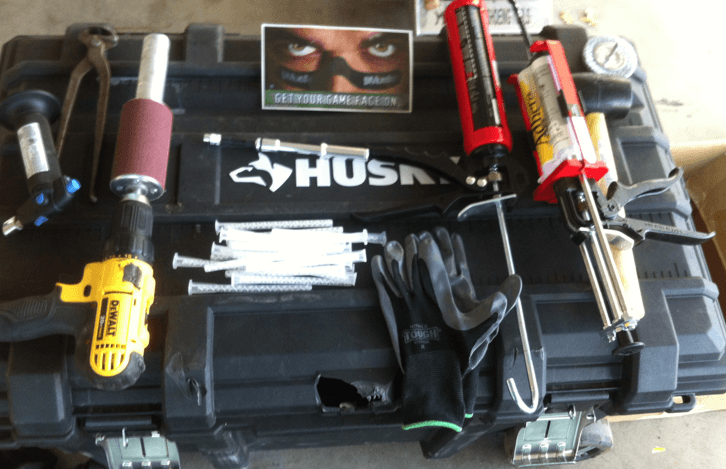
Work station set up.
Glue prep involved a step-by-step process that was thorough and consistent. Tools required for glue prep include the following:
- Wire brush and hoof pick
- Drill and buffy attachment with 60 grit sanding paper sleeve
- Sharp rasp
- Small table top trigger start propane torch
- Rotary tool with a 9931 Dremel bit
- Pair of Easyboot Zips

Ashley Gasky ready to glue.
To begin prepping the feet for application of the Easyboot Glue-Ons we used our wire brush and pick to remove any loose debris from the sole side of the foot and brushed dirt from the outer hoof wall. Using fit shells, we sized the horse prior to prepping the foot. Hoof prep required the following steps:
- Buffy the outer hoof wall from heel to heel.
- Use side edge of the rasp to notch the entire hoof wall surface, creating ridges horizontally across the wall.
- Torch the outer wall then wire brush. Repeat.
- Dremel the entire sole side of the foot.
- Torch the sole side of the foot then wire brush. Repeat.
- Apply Easyboot Zip to prepped foot.
- Prepare Easyboot Glue-Ons for application.
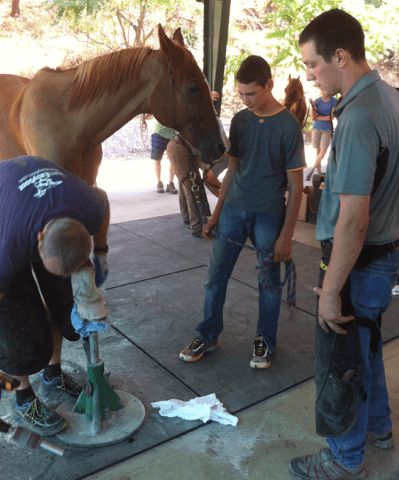
Garrett Ford and Derick Vaughn work to prep the foot.
Clean shells, fresh out of the package, were applied to the foot. Using Sikaflex for hoof packing, we created a bead of product along the bottom inner edge of the shell and built a frog along the foot side of the shell to fill any concavity in the hoof. Then we applied Vettec Adhere to inside of the shell before application.
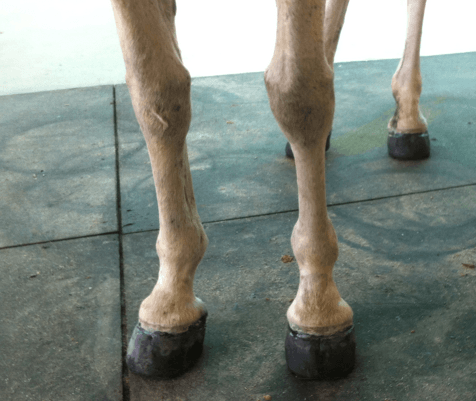
Easyboot Glue-Ons, completed and ready for Tevis Cup.
Pete and I worked like a well-oiled machine, communicating our needs, preparing tools and product for each other, cleaning up tools tossed aside after use, reminding each other to breathe, hydrate, and refuel. We were confident in our skills and eagerly used our new techniques learned from Garrett, Kevin, and Christoph.
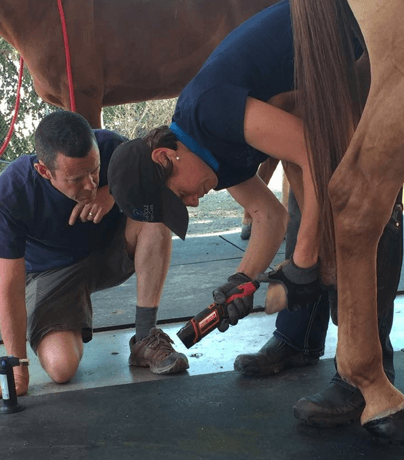
Kevin Myers and I prepping the foot with a rotary tool.
After three days of working together, sharing meals, and spending time exploring Auburn and the local swimming holes, it was clear to me that I had been a part of a unique group of professionals. Each of us had complimentary skills and our personalities meshed as if we had known each other for a long time. We had just enough comic relief to make the experience fun while maintaining professionalism and focusing on the importance of our task. All of us stayed for the race after gluing was completed and participated in portions of the event.
Team members met at Robie Park to watch vet checks and aid in preparations for the race. On race day Curtis, Jeremy, and Derrick crewed, and Ashley volunteered.
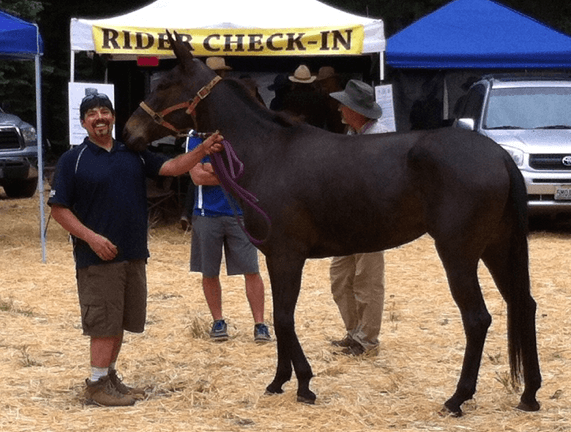
Jeremy Ortega helping a rider while they register at the check-in tent.
Merriam Webster Dictionary defines teamwork as “the work done by people who work together as a team to do something” and camaraderie as “a feeling of good friendship among the people in a group”. Teamwork, when done well, creates camaraderie and successful team leaders create a lasting sense of accomplishment that spans time and space.

After our Tevis Cup experience, each of us returned to our farrier businesses, families, and regular lives and with us we carried the “feeling of good friendship”, a sense of accomplishment for achieving our goal, and new knowledge to share with our clients and horses.
References
Department of Employee Services. A Well-Oiled Machine? https://www.lakecountyfl.gov/documents/employee_services/training/team_building.pdf
Merriam Webster (2015). Dictionary. Retrieved from http://www.merriam-webster.com/dictionary.




